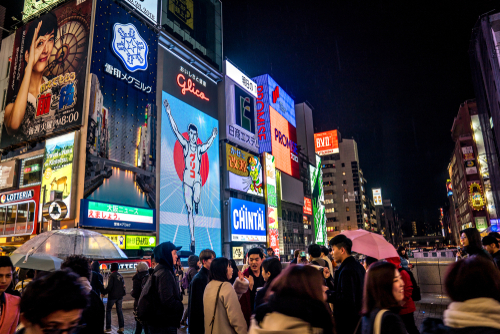Magic Happens When You Combine Digital Signage with Location Analytics
By Alex Mardikian
Digital signage is evolving fast. Not so long back it was a nice accessory to a retailer’s other marketing tools, but today it is an essential part of any well-rounded marketing strategy. 4 out of 10 retailers are already using digital signage. DOOH has come of age. The value proposition of DOOH is now far more appealing because of the analytics available. This data is helping retailers decide on the type of signage to use, locations, demographics to target, and such factors. Retailers today are doing much more with digital signage than simply flashing content playlists inside stores.
For example, VODXS faucet-based ad systems allow retailers to interact with an interested audience on a one-on-one basis. If you are a retailer, you can share useful information through faucet-based ad systems and encourage the audience to take positive action.
Digital signage today is a part of a digital network that is well integrated and intuitive. The development of such a digital ecosystem is via data and analytics. Data enables digital signage to present contextual content at the right time and at the right place for maximum impact.
Digital signage content management systems that are driven by location-based retail analytics can help develop strategies that result in the collection of accurate customer data in real time while confirming to privacy laws. This can drive instantaneous changes and tweaks in content that is flashed across locations. For example, such real-time data can help stores decide on whether to offer discount on a product or some other offer.
DOOH that can interact with devices such as smartphones can relay data on behavior and buying trends. This data can be used in conjunction with big data obtained through other sources for the purpose of targeted marketing through social media, interactive digital kiosks, VODXS ads, SMS, and email marketing.
Analytics is providing retailers with crucial business intelligence for crafting marketing strategies that deliver extremely attractive returns on investment. With data in hand retailers are now able to streamline operations and optimize buying to reduce storage costs.
Linking a digital signage CMS to retail analytics platforms provides you with insights and data that you may otherwise overlook.
The insights you gather from data are going to be only as good as the quality of the data. Therefore, you need to capture data using the best available technology and at the right location. There is no dearth of sensor technologies available for retailers. These technologies are divided into passive and permissive. The former includes those technologies that capture activities inside retail environments, but they do not record or keep personal information. Permissive sensing technologies gather and store personal information of consumers, but only after the consumer has opted in. Analysis of data thus gathered can lead to more assured decision making by retailers.
For example, retailers wishing to decide upon the best location for setting up digital kiosks can rely upon headcounts and dwell times, flow of traffic in the store can be tracked, age, gender, and other attributes of the consumer can be noted. Purchase habits of regular customers can help in creating digital signage messages specifically targeted at this group.
With data, signage can contribute in a big way in the management of inventory across different locations.
Camera-based technologies can even capture the expressions of consumers as they check out a product. This is an unbelievable input that you can factor for creating content on digital signage and also for web marketing.
With video driven analytics, retailers can get an idea of store entries, basket size, rush hour traffic, bottlenecks in the flow of traffic, merchandise that excites maximum interest, promotions that work, and promotions that don’t. This information helps to improve operational functions, and in the systematic assigning of roles to staff.
In the US, shoppers above the age of twelve invariably carry a mobile device with Wi-Fi and Bluetooth capabilities. If either of these is switched “on” then mobile location detection technologies can ascertain if the buyer is a returning buyer or first time one. Returning buyers can be presented information based on past buying habits.
Choose digital signage and media players that can integrate smoothly with sensors. This will really help you to create engaging and informational content that can influence customers at the point of touch.

